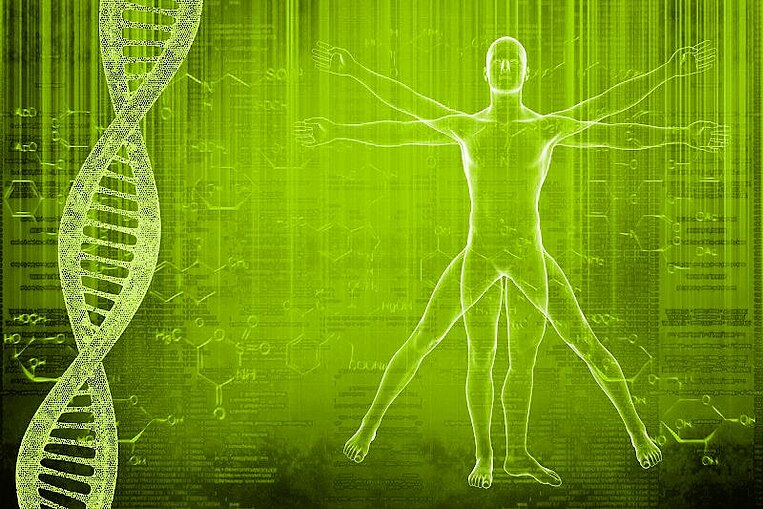Vitamin are healthy - Every child knows this. Micronutrient medicine is more than just the use of vitamin C to protect against getting a cold: Micronutrients, including vitamins, are the basis for a healthy body and therefore a healthy psyche. When applied correctly, they help promote well-being and reduce the risk of contracting many different kinds of illnesses. What’s more: Micronutrients can be applied therapeutically in the treatment of many types of illnesses or can even represent a cure. Find out more here about the fundamentals and aims of micronutrient medicine.

What is micronutrient medicine?
Micronutrient medicine is also known as orthomolecular medicine. The term was coined by the two-time Nobel prize winner, Linus Pauling. Ortho means correct or right and molecular means the smallest building blocks. Therefore, it is the medicine of correct small building blocks. Linus Pauling is also the source of the following definition, which is still used today:
"Orthomolecular medicine is the the preservation of good health and the treatment of disease by varying the concentration in the human body of substances that are normally present in the body."
Simply put, this means:
Micronutrient medicine is the application of substances which are present in foods or which are produced by our body. This includes vitamins and minerals, but also phytochemicals, essential fatty acids, amino acids, and enzymes, such as bromelain or lactase. Furthermore, the use of fiber, special carbohydrates, and proteins has increased and the lines to classic medicine are becoming increasingly blurred.
Endogenous hormones (neurotransmitters) and their precursors are covered by Pauling's definition. Amongst others, this includes insulin or the sleep hormone melatonin.
The history of micronutrient medicine
Linus Pauling's work is based on research from the early 20th century. During this time, it was discovered that there must be other substances in food, apart from just carbohydrates, fats, and proteins, which are necessary for the body: In the past, thousands of soldiers, sailors, and prisoners died of beriberi until it was discovered that it is due to vitamin B1 deficiency. Similarly, the "sailor’s illness", scurvy, is triggered by vitamin C deficiency. After the discovery of this information, both diseases could be treated through simple changes to diet and were almost completely eradicated in our part of the world.
In the 1960s, Linus Pauling recommended the intake of extremely high doses of individual substances. For example, Pauling took 18 grams of vitamin C each day as a means of preventing various illnesses. Even though recommendations of this type are rare nowadays, or only in specific cases, the underlying principles of the field of micronutrient medicines founded by Pauling remain applicable today.
Micronutrient Medicine: More relevant than ever
While some of Pauling's claims did not stand the test of time, his approach, using endogenous substances and nutritional substances, is still very relevant today. An example is the now recognized treatment of osteoporosis using a combination of calcium, vitamin D, vitamin D and vitamin K2, coupled with exercise. Even though severe deficiency-related illnesses, such as beriberi and scurvy, are now very rare in our part of the world, our nutritional intake often leaves a lot to be desired. Also, the treatment of deficiencies is only one aspect of orthomolecular medicine. Find out more here:
Increased personal use
Various factors can be that requirements for each nutritional substance can increase so considerably that they cannot be met by usual means. Amongst other, these include
- various types of illnesses,
- several types of medications and
- certain genetic changes.
In such cases, micronutrients must be taken in a targeted fashion to avoid deficiencies or to compensate for them. Here you can find out more about what may cause an increase in your personal requirements.
Application of micronutrients regardless of the actual function.
Along with their primary function, some micronutrients can have other uses. For example, vitamin B12: It is actually a part of many enzymes in our body. However, it can be used as an antidote for cyanide poisoning.
Our modern diet does not suit our genes
Our genes are in the same state they were 100,000 years ago. During those times, humans had a very varied diet which was very rich in nutrients: high levels of micronutrients, fiber, phytochemicals, omega-3 fatty acids, and high-quality amino acids, with a relatively low calorie count. The amount of carbohydrates as part of their diet was also limited. Additionally, our ancestors were always on the move and active. These are the conditions for which our body is ideally configured.
Our modern diet, in contrast, is rich in energy and carbohydrates, while the concentration of micronutrients is low. On top of this, most people lead a sedentary lifestyle. Our body cannot sufficiently adapt to these conditions. This has led to an increase of civilization diseases such as obesity, type 2 diabetes, osteoporosis, Alzheimer's disease, or chronic-inflammatory intestinal illnesses. At the same time, thanks to modern medicine, we are living longer – but unfortunately not always healthier. This places great strain not only on the individual, but on society as a whole.
The aims of micronutrient medicine
This can and should help supplement conventional medicine, not replace it. Moreover, the majority of physicians are orthomolecular specialists without being aware of it. The administration of an iron infusion to treat iron deficiency or insulin to treat diabetes are classic orthomolecular medicine applications.
The advantages of micronutrient medicine
Micronutrient medicine has many advantages, which make it especially beneficial in the treatment of chronic illnesses (but also acute illnesses):
Causal Therapy
In many cases, an unsuitable diet is the cause, or one of the causes, of illnesses. The use of micronutrients in these cases is a causal therapy, which should be considered the most suitable option. Even illnesses that are caused by inflammatory processes in the body can be causally treated using anti-inflammatory micronutrients. In such cases, the application of normal medication, with its side-effects, can be made unnecessary or reduced.
Free from Side-Effects
Because micronutrient medicine only uses substances which are naturally present in the human body, when used correctly, it is free from side-effects in most cases. Naturally, this does not mean that one should take high dosages of micronutrients every day - this type of usage is often ineffective and can, in some cases, be dangerous - e.g. overdose or interactions with medications.
Helping the body to help itself
When it is healthy, our body is capable of fighting off many illnesses – more effectively than many types of medication. One of the foundations for this is a good supply of nutrients. This is especially important for chronic patients: Many illnesses and medications negatively affect the nutrient supply. Additional illnesses are the consequence, and possible deterioration of existing illnesses. This is a vicious circle which can be broken by the application of individually tailored micronutrient therapy.
Long Lasting
Micronutrient therapy is not free - in particular, the costs are not usually covered by health insurance providers. However, in the long-term, it reduces costs, also for the patient:
The foundations of successful micronutrient therapy
As with any type of therapy, when using micronutrient therapy, you cannot just take anything and hope that it will work. Therefore, there is a need to clarify the following questions:
- What is the diagnosis (which illness, which problem requires treatment)? If this has not yet been clarified, you should visit a physician and not use micronutrients on a hunch.
- Which micronutrients are an effective treatment for my type of illness? Here on the VitaminDoctor website, you can access a wide range of information. In most cases, this will enable you to put together an effective combination of micronutrients. If it is deemed necessary, seek the assistance of a physician or alternative practitioner before beginning treatment with a certain micronutrient.
- How is my personal supply of micronutrients? This cannot normally be answered without the aid of a physician or alternative practitioner who can order laboratory tests if necessary. Laboratory tests are necessary for many types of illnesses to determine the correct micronutrient dosage and intake.
- Therapist Training:Some doctors have a critical stance toward micronutrient medicine − usually, because they are not aware of current study data. Therefore, it can be useful to seek the advice of a physician who has undergone training in this field.
The quality and dosage of the applied preparations continue to play a crucial role in the success of micronutrient therapy. Preparations should be free of colorings and, where possible, free of auxiliary agents.
Is micronutrient medicine scientific or esoteric?
Micronutrient medicine is based on a large, and continually increasing, number of medical studies which clearly prove its effectiveness and its use as a reliable basis for therapy and prevention. And this is despite the fact that it is more challenging to design studies for micronutrients than for medications: You either take medication or you don't. This makes it relatively easy to design a study for them. In contrast, micronutrients are usually ingested through nutrition in varying amounts. This means that the reserves vary greatly from person to person. Furthermore, many micronutrients only begin to take effect after several weeks or months. This means that studies must be long-term. This makes the studies more difficult and more expensive. Nevertheless, the fact that many studies show a clearly positive effect, demonstrates how effective these substances are.
In addition, there are many active substances which studies have shown to most likely be effective, even though this has not been definitively proven or it is not known if their effectiveness is the same for every person. In such cases, it may be deemed useful to use these micronutrients and to see if they are effective in the individual case.
Important to know
Nutrition, which is the supplying oneself with micronutrients, is important for health and well-being. However, this is just one aspect which is required for a long and healthy life that is full of vitality: A healthy lifestyle with plenty of exercise, meeting up with friends, and other things that make us happy, also all play an essential role.
Summary
Micronutrient medicine, also known as orthomolecular medicine, uses nutritional substances and our own bodies to help prevent and treat illnesses. These substances include vitamins, minerals, phytochemicals, amino acids, and essential fatty acids. If applied correctly, they can target the underlying causes of many illnesses and avoid side-effects. The correct choice of substance and dosage for the existing illness is crucial for success. If required, seek the advice of a physician or alternative practitioner, who will compile a diagnosis and carry out laboratory tests if deemed necessary.




